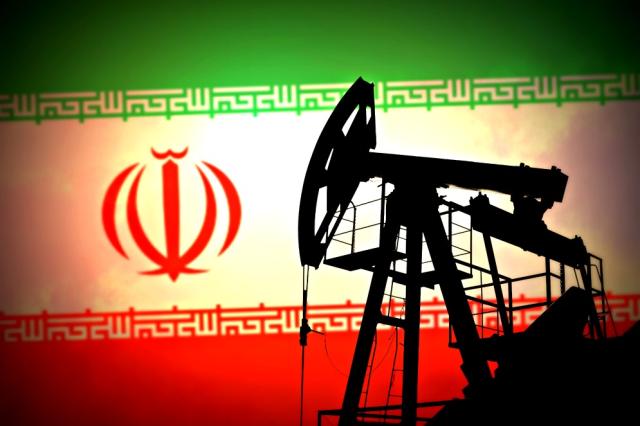
Iran's crude output is forecast to fall further despite the U.S. issuing waivers for eight countries to import oil from the sanctions-hit country. (Source: Shutterstock.com)
Oil prices have swung wildly in the past month ahead of the U.S. sanctions against Iran taking effect. But what are the key factors driving the price swings and what comes next?
1. From Famine To Feast?
Just one month ago Brent crude hit a four-year high above $86 a barrel as traders worried that the forthcoming U.S. sanctions on Iran would create a shortage of supplies.
Since then, however, prices have fallen 15% as the market has reassessed the situation.
U.S. oil output has risen faster than expected, while Saudi Arabia, the world’s largest exporter, has increased production close to its highest level on record.
Russia and others have also started to pump largely at will, while the U.S. has issued limited waivers to major buyers of Iranian oil to help keep prices in check.
It seems the market has suddenly become a lot more relaxed about the availability of crude, and prices have weakened accordingly. But some traders are warning that it could be premature to argue that the oil market’s troubles are behind it.
2. Iran Sanctions Take Effect
Eight countries have been given allowances to import limited amounts of Iranian oil as U.S. sanctions aimed at hurting Tehran’s economy take effect. China, India, South Korea, Japan and Turkey are among the beneficiaries.
Iran’s exports may not now fall quickly to the U.S. administration’s target of zero, but they are down significantly. Iran had ramped up exports to 2.8 million barrels per day (bbl/d) in April and they fell below 1.8 million bbl/d last month.
Even with the waivers, analysts at consultancy FGE forecast a further drop to 1.3 million bbl/d in the next six months.
“We do not see [the eight countries] having carte blanche to import what they like,” FGE said, warning of a fall to below 1 million bbl/d next year and another run-up in crude prices.
Brian Hook, U.S. special representative for Iran, said Nov. 5 that there would be further reductions. “Our goal remains getting countries to zero over time.”
3. OPEC Weighs Demand Slowdown
OPEC and Russia agreed in June to relax their production cuts after coming under pressure from U.S. president Donald Trump, who wanted to keep prices in check while moving to cut Iran’s exports.
OPEC kingpin Saudi Arabia pledged to alleviate any market shortage and latterly said it would boost production towards 11 million bbl/d, a record.
But Saudi Arabia faces a delicate balancing act amid uncertainty about global trade and emerging market currencies hitting economic growth and consumption. While the kingdom wants to placate the U.S., too much supply could send prices lower.
Energy minister Khalid A Al-Falih told Russian news agency Tass last month that there could be a potential oversupply. “A world economic slowdown could hurt oil demand,” he said.
The remarks follow downward revisions by OPEC’s research arm, which has said that world oil demand will rise 1.36 million bbl/d next year, lower than the 1.5 million bbl/d rise this year. These estimates have been repeatedly lowered since July when it forecast growth at 1.65 million bbl/d in 2018 and 1.45 million bbl/d for 2019.
At a time when the kingdom needs strong oil prices to fund its socio-economic reforms, Falih’s remarks suggest that the kingdom could consider cutting back output again.
“Saudi Arabia and some of the other core OPEC members will be proactive in ensuring that the market does not get oversupplied,” said analysts at Energy Aspects.
Ministers will meet on Sunday in Abu Dhabi to discuss output policy, ahead of a formal ministerial gathering in Vienna in December.
4. Spare Production Buffer Is Limited
Oil markets may be looking better supplied than they were a month ago, but lingering in the background are concerns about where the additional supply has come from.
While some is from new shale wells in the U.S., additional Saudi Arabian oil has meant tapping into the kingdom’s spare capacity—a buffer of output kept in reserve in case of severe supply disruptions.
Once that has been brought online to replace Iranian barrels there may not be much left should another supply outage occur.
“What we find particularly scary about oil markets today is the lack of OPEC spare capacity,” said Neil Beveridge at Bernstein, who estimated spare capacity had fallen to about 1.3 million bbl/d, or little more than 1% of global demand.
He added that if the U.S. succeeded in pushing Iran’s oil exports towards zero there would still “be a physical shortage of oil in the world”, before factoring in other risk-prone countries such as Venezuela, Nigeria and Libya.
Venezuela’s oil production has plummeted from 2 million bbl/d to 1.2 million bbl/d in just 15 months, with little sign that its output declines will slow.
“It is possible to envisage a black swan event . . . [that] could easily wipe out what little spare capacity we have left,” Beveridge said.
5. Bullish Bets On Crude Oil Fall
Hedge funds have gone from being bullish on crude earlier this year to sharply paring back their positions in the past few weeks, suggesting that many of them are betting that the cycle has turned.
Funds trading West Texas Intermediate, the U.S. benchmark, have cut their net longs—the difference between bets on rising and falling prices—to the lowest level in a year, while those trading Brent, the international benchmark, have cut net longs to the lowest since July.
Combined funds now hold positions equivalent to little more than 500 million barrels of crude, a substantial amount but well below 1 billion-plus barrel positions they have held on numerous occasions in the past two years.
For some, this is a sign prices will keep falling, with an absence of buying by funds likely to take some of the froth out of the market. Some funds have even started opening outright bets against the price.
But other analysts believe that if more barrels are lost from Iran than currently expected, or another supply outage occurs elsewhere, funds will rush back into the market adding fuel to any rally.
Recommended Reading
Cheniere Energy Declares Quarterly Cash Dividend, Distribution
2024-01-26 - Cheniere’s quarterly cash dividend is payable on Feb. 23 to shareholders of record by Feb. 6.
Marathon Petroleum Sets 2024 Capex at $1.25 Billion
2024-01-30 - Marathon Petroleum Corp. eyes standalone capex at $1.25 billion in 2024, down 10% compared to $1.4 billion in 2023 as it focuses on cost reduction and margin enhancement projects.
Humble Midstream II, Quantum Capital Form Partnership for Infrastructure Projects
2024-01-30 - Humble Midstream II Partners and Quantum Capital Group’s partnership will promote a focus on energy transition infrastructure.
BP’s Kate Thomson Promoted to CFO, Joins Board
2024-02-05 - Before becoming BP’s interim CFO in September 2023, Kate Thomson served as senior vice president of finance for production and operations.
Magnolia Oil & Gas Hikes Quarterly Cash Dividend by 13%
2024-02-05 - Magnolia’s dividend will rise 13% to $0.13 per share, the company said.





